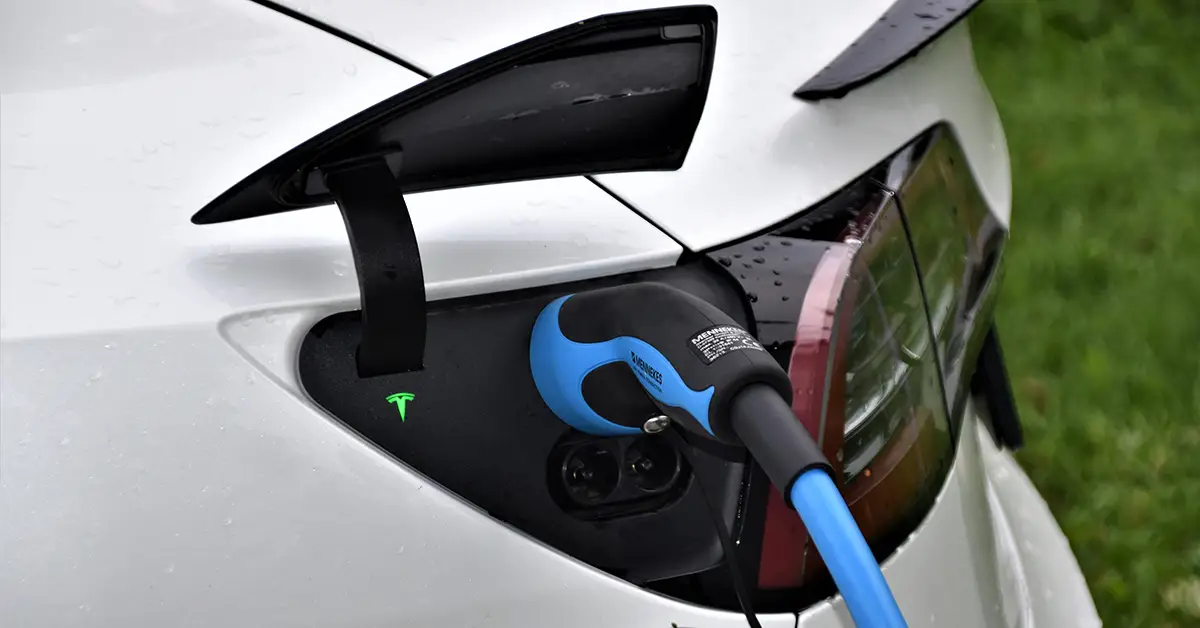Tesla Battery Care 101: Tips for Optimal Performance and Longevity
07/11/2023 / Gail Alfar
Tesla Battery Care 101: Tips for Optimal Performance and Longevity
Say Goodbye to stops at the gas pump! Your EV is powered by a charged-up battery. In this article, we’ll look at a few fundamental battery care tips for your Tesla.
Anyone who knows me understands how much I enjoy driving my Tesla. If you are considering purchasing an electric vehicle (EV), I can assure you that it's a worthwhile investment. And you might be pleasantly surprised by the minimal maintenance it requires compared to traditional combustion vehicles, including the battery system.
Battery Optimization
Tesla uses lithium-ion cells in its vehicles, which offer a good balance between energy density, power output, and battery life. These cells are designed to deliver high performance and withstand repeated charge and discharge cycles. Different years, models, and trim levels have different battery capacities ranging from ~50 kWh to ~100 kWh.
Tesla’s Software for Battery Care
Your vehicle's software will receive over-the-air updates as needed to improve battery care. Make sure that you install these updates. They can optimize battery performance, introduce new features, and enhance efficiency. This capability allows Tesla to continually improve the battery performance and address any potential issues through software updates.
Tesla Impact Report of Battery Longevity
According to Tesla’s 2021 Impact Report, “Our batteries are designed to function for the entire life of the vehicle. Tesla’s battery packs are designed to outlast the vehicle. We estimate that a vehicle gets scrapped after approximately 200,000 miles of usage in the U.S. and roughly 150,000 miles in Europe.”
Tesla invests heavily in battery research and development. This includes exploring new materials, cell designs, and manufacturing techniques to improve capacity, energy density, extend range, enhance longevity, and limit degradation. Tesla's partnership with battery manufacturers and its own battery Gigafactories enable the company to stay at the forefront of battery technology.
Tesla Battery Maintenance Tips
Battery Discharge When Parked
When your Tesla is parked, the battery continues to power the onboard electronics and discharge at a rate of about 1% per day. This varies depending on weather extremes, your settings, and your personal vehicle configuration. By making sure your car's settings are configured to optimize battery efficiency, you have some control over how quickly your vehicle discharges.
Importance of Cabin Overheat Protection
In a study at the University of California, researchers found, “Vehicles parked in the sun during a simulated shopping trip, the average temperature inside the vehicles hit 116°F, dashboards 157°F, and steering wheels 127°F. in one hour.”
To combat this, Tesla offers a safety feature called Cabin Overheat Protection. This feature ensures that on a hot day, your Tesla will remain below a certain temperature inside, even when you are not near the vehicle. You can set Cabin Overheat Protection to 90, 95, or 100°F. By selecting a higher temperature, you could potentially reduce your vehicle’s energy consumption.
Sentry Mode and Energy Usage
It’s worth exploring the many customized settings in your EV, as some of them can significantly affect battery consumption even when you are not driving. One such important setting is Sentry Mode.
Activating Sentry Mode is useful as it keeps the vehicle's cameras recording events occurring in your vehicle's vicinity at all times. However, since Sentry Mode consumes additional energy, some Tesla owners choose to disable Sentry Mode at frequently visited places like home or work while keeping it enabled when parked in unfamiliar places.
Extended Unplugged Period - The 1% Charge Level Rule
Life has a way of being unpredictable, and you will occasionally have to leave your EV unplugged for an extended period. This could happen at the airport, when you may not have time to plan ahead. In such instances, remember to leave your battery with a sufficient charge to ward off any unwelcome surprises.
In these situations, Tesla recommends keeping the 1% rule in mind to ensure that you leave the battery with a sufficient charge level. The battery can discharge at a rate of approximately 1% per day; therefore, as an example, over a span of 14 days, a battery can lose up to around 14% of its charge on average. Make sure to plan accordingly.
Low-Power Consumption Mode
Discharging the battery to 0%, whether by leaving it unplugged or driving it, can inflict damage to its components. To safeguard against this, Tesla vehicles are equipped with a low-power consumption mode. When the displayed charge level drops to approximately 0%, your Tesla enters this mode. When it reaches this level, the battery ceases to support the onboard electronics and the auxiliary low-voltage battery.
If your Tesla enters low-power consumption mode, contact Tesla Support through your app or by phone.
For more information, see the Tesla Owner’s Manual Battery Care (accessed on June 4, 2023)
Tesla Batteries and Extreme Temperature
Just like humans, EVs perform best in moderate climates. Extreme heat or cold can affect your battery's efficiency.
For optimal long-term performance, avoid extreme temperatures. Tesla suggests avoiding ambient temperatures surpassing 140°F or below -22°F for more than 24 hours at a time.
Range Tips for Your Tesla
Don't Forget about Tire Pressure
Properly inflated tires help improve overall efficiency and range. Regularly check and maintain the recommended tire pressure for your Tesla model. This simple step contributes to the overall energy efficiency of your vehicle and indirectly supports the battery's performance.
More Acceleration = Less Battery
While your Tesla has a very quick 0-60 time and can get up to speed before you even know it, the heavier your foot, the more power you use. If you're trying to conserve energy and limit charging when you're not driving, in order to limit the number of cycles you put on your batteries, practice conservative acceleration.
Recharge with Regenerative Braking
Tesla's vehicles utilize regenerative braking, a feature that recovers energy during deceleration and braking. When a driver lifts off the accelerator or applies the brakes, the motor acts as a generator, converting kinetic energy into electrical energy. This energy is then stored back in the battery, increasing overall efficiency and extending the vehicle's range.
Tesla Battery Charging Best Practices
Tesla’s website provides six great suggestions for charging at home:
Plug your Tesla into the charger every evening to ensure readiness and battery health.
Keep your Tesla within the 'Daily' range bracket, around 90%, for balanced performance.
Reserve charging to 100% for longer trips to extend range, but avoid frequent full charges.
No need to fully deplete the battery before charging; lithium-ion batteries are memory-effect-free.
Adjust charge settings to match your requirements and find the right balance.
Regular charging optimizes battery health, longevity, and overall vehicle performance.
One additional thing you can do, if available in your Tesla model, is utilize the Scheduled Departure feature. This allows you to set a specific time for your vehicle to begin charging before you plan to drive. It ensures the battery is adequately charged and ready for your journey, without leaving it at a high state of charge for an extended period.
Battery Care is an Important Part of Tesla Ownership
As you can see, maintaining and caring for your Tesla's battery system is crucial for optimal performance and longevity. By being aware of how Tesla battery systems work and following these tips and guidelines, you can maximize the performance, efficiency, and longevity of your Tesla's battery system, enhancing your overall ownership experience and enjoying the benefits of electric driving.
My Model Y All-Wheel Drive has a range of 330 miles on the battery, and it is so much fun to drive! I definitely want to keep it around for a long time and work hard to make sure the batteries are taken care of properly.



